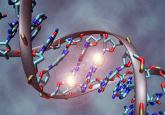Erectile dysfunction medication may lower Alzheimer’s risk

Drug repurposing experiment reveals that medication for erectile dysfunction could have neuroprotective effects, reducing the risk of developing Alzheimer’s disease.
In a recently published study, researchers from University College London (UK) have found evidence suggesting a potential link between the use of phosphodiesterase type 5 inhibitors (PDE5Is) for erectile dysfunction (ED) and a decreased risk of Alzheimer’s Disease (AD). Researchers conducted a large population-based cohort study, investigating the prescription records of over 270,000 men diagnosed with ED between 2000 and 2017. The research aimed to elucidate the relationship between PDE5I use and incidence of AD.
AD is a leading cause of death, currently affecting 57 million globally and predicted to affect over 150 million by 2050. There is no cure for AD, making the pursuit of treatments that can delay the disease’s onset a crucial focus of research.
With the global burden of AD on the rise, researchers are investigating drug repurposing as an alternative therapeutic option. One such example includes the use of Viagra (sildenafil), a PDE5I, originally developed to treat hypertension and angina. The intended vasodilatory effects were also found to cause smooth muscle relaxation in the corpus cavernosum, making sildenafil an effective repurposed treatment option for ED. Beyond these two uses, sildenafil has also been used to treat pulmonary arterial hypertension.
The repurposing possibility of PDE5I is now being investigated as a drug to prevent the onset of AD. The primary clinical effects of PDE5I are as a result of raised cyclic guanosine monophosphate (cGMP). cGMP is degraded by the phosphodiesterase enzyme (PDE). Previous studies have investigated the link between cGMP and memory, with low levels of cGMP in tandem with raised levels of PDE being present in the brains of people with AD. Whilst preliminary research in animal models have demonstrated possible neuroprotective benefits, in humans the neuroprotective effect is inconclusive. Some studies suggest that sildenafil use in older adults is associated with a significant reduction in the risk of developing AD compared to non-use, whereas others find no such association between sildenafil use and AD.
 Lecanemab granted full approval by US FDA
Lecanemab granted full approval by US FDA
Read further details of the FDA approval for an anti-amyloid monoclonal antibody used to treat early-stage Alzheimer’s in this news piece.
In light of the contradicting evidence, researchers from UCL investigated the prescription records of 413,858 men newly diagnosed with ED from 2000 to 2017. After screening, 269,725 men were included in the study, with an average age of 58.5 years and a median follow-up period of 5.1 years.
Among the cohort, 1119 individuals were diagnosed with AD during the follow-up period. Notably, those who had been prescribed PDE5Is exhibited a significantly lower risk of developing AD compared to non-users. The crude incidence rate (IR) of AD for PDE5I users was 8.1 per 10,000 person-years, compared to 9.7 for non-users.
Initiation on sildenafil (a specific PDE5I) was associated with a lower risk of AD. Similar trends were observed for other PDE5Is but with less certainty due to smaller sample sizes. Lower AD risk in PDE5I users was consistent across patients with hypertension, diabetes, and older age.
The lead authors of the study Ruth Brauer commented, “we can’t say that the drugs are responsible, but this does give us food for thought on how we move into the future”. They further explained that the exact effect of these drugs on Alzheimers is not fully elucidated, and further clinical trials are needed for example, do the neuroprotective effects extend to women as well as men.
With the discrepancy in findings between previous studies and the clinical data supporting the potential repurposing effects of PDE5I on neurologic disease, more studies are needed. Long-term, prospective studies, as well as mechanistic investigations, will be crucial in unravelling the precise relationship between PDE5Is and AD risk reduction.





